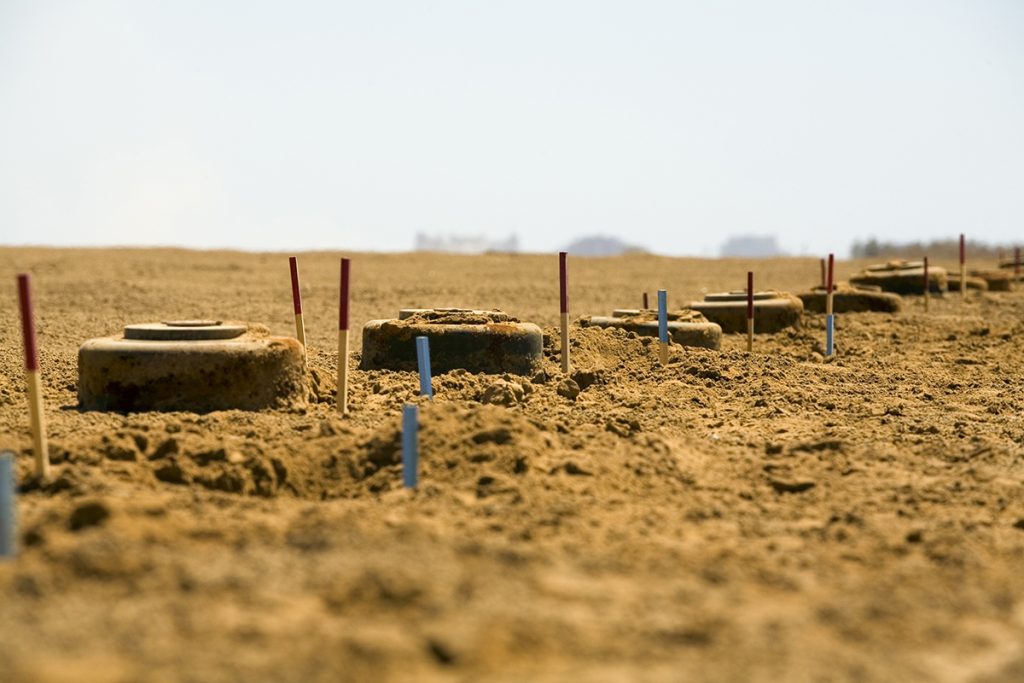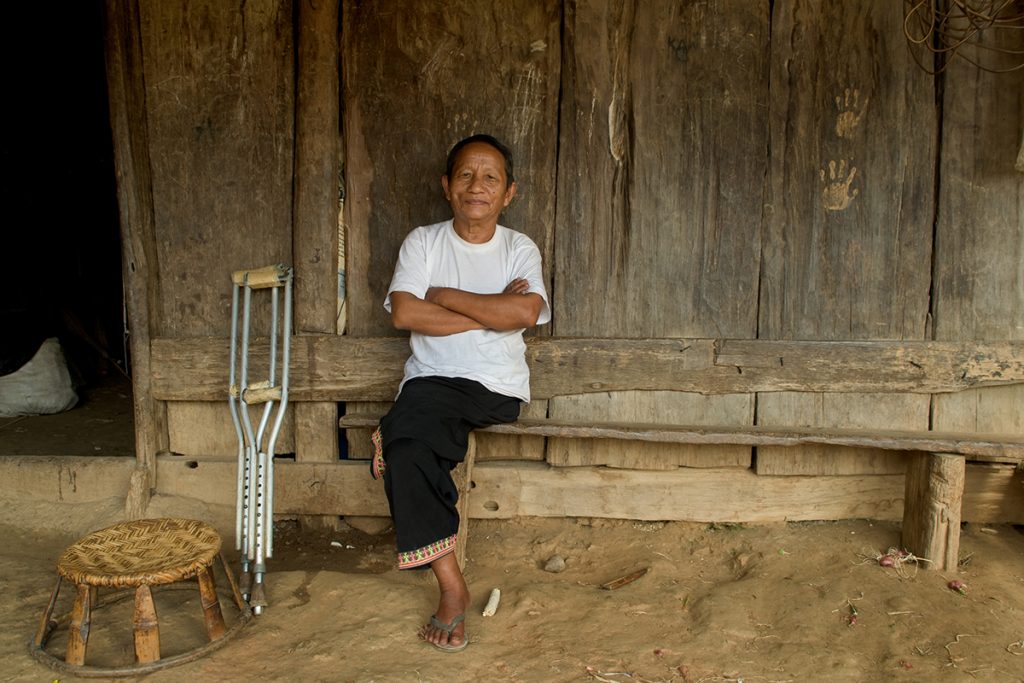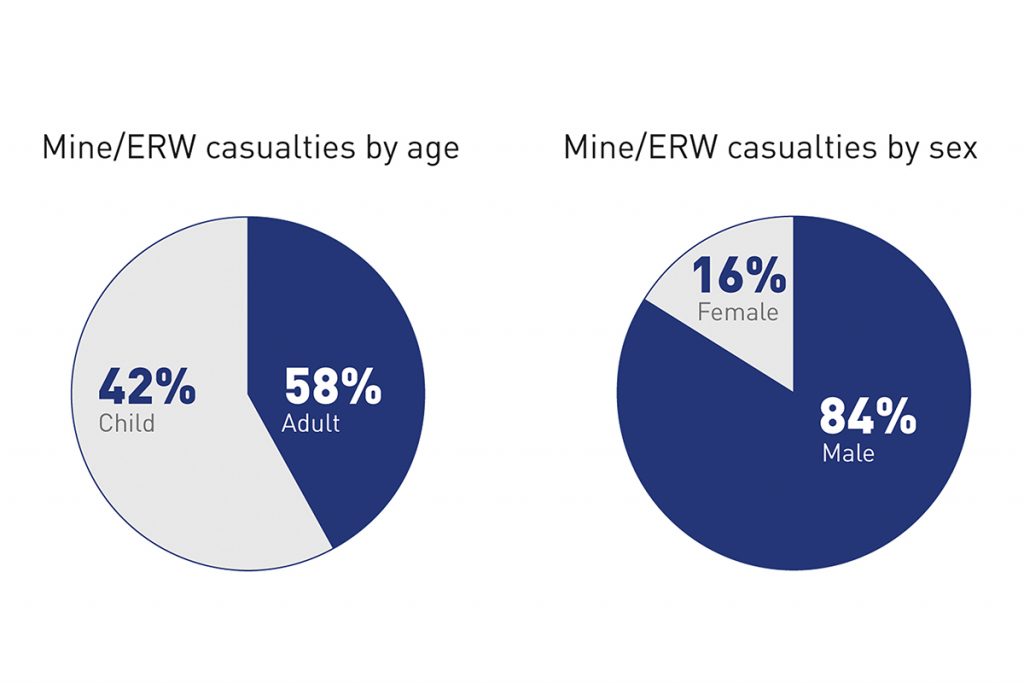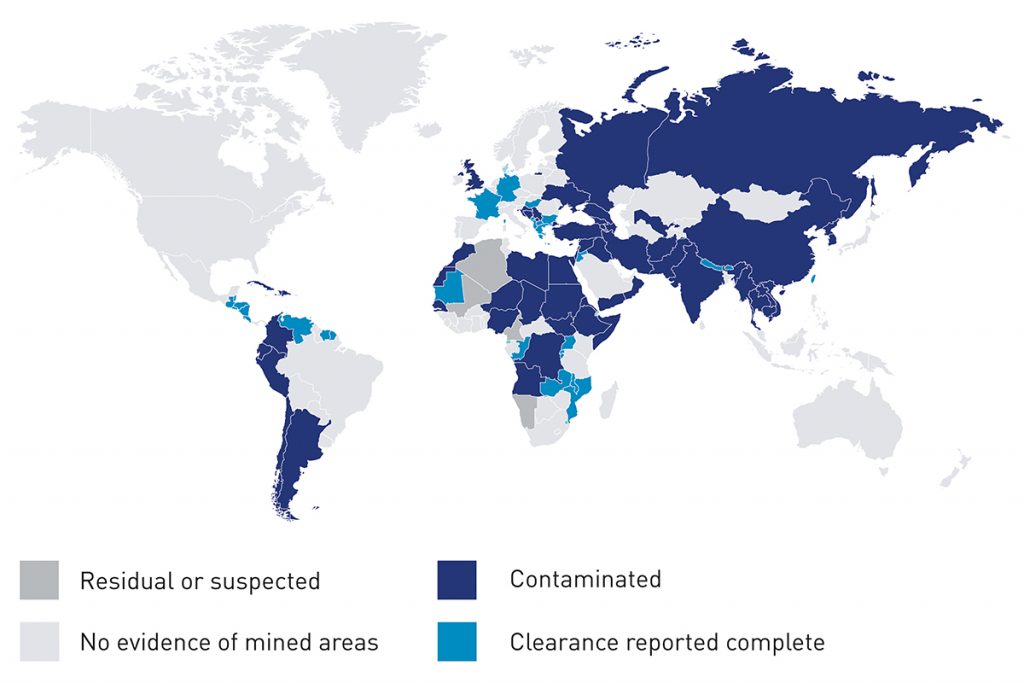Landmine Facts
To understand why Aardvark is so passionate and uncompromising about the global eradication of unexploded ordnance, look at these devastating facts.
“Landmines are a humanitarian issue,
not a political one.”
Prince Harry, Duke of Sussex ~ Chatham house 2017
Prince Harry, Duke of Sussex ~ Chatham house 2017
Types of Mines
ANTI-PERSONNEL mines:
An antipersonnel land mine is an explosive device made to injure or kill a person.
BLAST AP Land Mines:
Triggered when stepped on blowing off the foot or lower half of the leg and project dirt and bone up into the leg, causing fragmentation. Designed to injure rather than kill, increasing the required logistical support.
FRAGMENTATION AP Land Mines:
Usually triggered by a tripwire, metal fragments are projected across a wide area, potentially injuring multiple personnel at once, causing extensive damage to the legs, stomach and chest, and can kill up to 50 metres from the mine.
BOUNDING FRAGMENTATION AP Mines:
Perhaps the deadliest of all AP land mines; when triggered a first charge lifts the mine up to waist height before fully detonating; the explosion shoots out a lethal 360-degree spray of metal fragments which can kill up to 35 metres from the land mine, and cause severe injuries at more than 100 metres.
Anti-tank (AT) Land Mines: Much larger than AP mines and with a larger explosive charge, AT mines are designed to destroy or incapacitate tanks and other vehicles. The blast on non-armoured vehicles is usually catastrophic.
AT mines also prevent vehicles carrying aid supplies from using the roads and hinder the clearance of AP mines. Most of the serious land mine incidents involving NGO personnel have been caused by AT mines.
The Cost to Communities
Landmines can remain in the ground for decades after conflicts end, killing or maiming those trying to re-establish their lives and livelihoods, preventing safe travel to schools, markets, health centres and water sources, and bringing costs of medical treatment. If able to return home, impoverished communities are unable to grow crops, keep livestock and earn a living if their land has been mined. As much as 35% of land in Afghanistan and Cambodia is now unusable.
More than 60 million people live in fear of being injured or killed by landmines. Every day!





